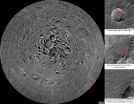(Press-News.org) In a surveillance study of infection with the bacterium Haemophilus influenzae among women of reproductive age in England and Wales from 2009-2012, pregnancy was associated with a greater risk of this infection, which was associated with poor pregnancy outcomes such as premature birth and stillbirth, according to a study in the March 19 issue of JAMA.
Haemophilus influenzae can cause illnesses that include respiratory infections. Some studies have suggested an increased risk of invasive H influenzae disease during pregnancy, although these were based on a small number of cases, according to background information in the article.
Sarah Collins, M.P.H., of Public Health England, London, and colleagues examined the outcomes of invasive H influenzae disease in women of reproductive age during a 4-year period. The study included data from Public Health England, which conducts enhanced national surveillance of invasive H influenzae disease in England and Wales. General practitioners caring for women ages 15 to 44 years with laboratory-confirmed invasive H influenzae disease during 2009-2012 were asked to complete a clinical questionnaire three months after infection.
The incidence of laboratory-confirmed invasive H influenzae disease was low, at 0.50 per 100,000 women (171 women). Pregnant women were at higher risk of infection mainly due to unencapsulated (a category of strain) H influenzae disease. This infection during the first 24 weeks of pregnancy was associated with fetal loss (93.6 percent) and extremely premature birth (6.4 percent). Unencapsulated H influenzae infection during the second half of pregnancy was associated with premature birth in 28.6 percent and stillbirth in 7.1 percent of 28 cases. In addition to the serious infection, these infants were also at risk for the long-term complications of prematurity. Pregnancy loss following invasive H influenzae disease was 2.9 times higher than the U.K. national average.
The authors write that the finding that almost all infections were associated with miscarriage, stillbirth, or premature birth provides evidence of the severity of infection in pregnant women. "Invasive H influenzae disease is a serious infection also among nonpregnant women that requires hospitalization for intravenous antibiotics and close monitoring following appropriate microbiological investigations, particularly given that more than half of the nonpregnant women in this investigation had a concurrent medical condition."
The researchers note that the overall estimated rates reported in this study should be considered a minimum because only laboratory-confirmed invasive cases were followed up.
(doi:10.1001/jama.2014.1878; Available pre-embargo to the media at http://media.jamanetwork.com)
Editor's Note: Please see the article for additional information, including other authors, author contributions and affiliations, financial disclosures, funding and support, etc.
Editorial: Adverse Fetal Outcomes - Expanding the Role of Infection
"What should be the response by the public health community and those providing care to pregnant women and newborns in light of the findings of Collins et al?," asks Morven S. Edwards, M.D., of the Baylor College of Medicine, Houston, in an accompanying editorial.
"With infectious diseases, the diagnosis is made only when infection is considered a possibility and when appropriate testing is performed. As an immediate goal, laboratories should be aware that H influenzae (especially unencapsulated strains) are potential pathogens in pregnant women and neonates," Dr. Edwards writes. "Moving forward, it will be important to determine the scope of infection caused by this pathogen in other geographic regions."
(doi:10.1001/jama.2014.1889; Available pre-embargo to the media at http://media.jamanetwork.com)
Editor's Note: Please see the article for additional information, including financial disclosures, funding and support, etc.
INFORMATION: END
Pregnancy associated with greater risk of certain bacterial infection; may worsen outcomes
2014-03-18
ELSE PRESS RELEASES FROM THIS DATE:
Study examines use of age-adjusted D-dimer levels to exclude lung blood clots
2014-03-18
Using a patient's age to raise the threshold for an abnormal result of a blood test used to assess patients with a suspected pulmonary embolism (blood clot in lungs) appeared to be safe and led to fewer healthy patients with the diagnosis, according to a study in the March 19 issue of JAMA.
D-dimer is a breakdown product of a blood clot, and measuring D-dimer levels is one way doctors exclude a diagnosis of pulmonary embolism (PE). Several studies have shown that D-dimer levels increase with age. As a result, the proportion of healthy patients with abnormal test results ...
Children with glomerular kidney disease more likely to have hypertension as adults
2014-03-18
Men who as children had glomerular disease, a disorder of the portion of the kidney that filters blood and one that usually resolves with time, were more likely than men without childhood glomerular disease to have high blood pressure as an adult, according to a study in the March 19 issue of JAMA.
Glomerular disease was defined for this study as glomerulonephritis or nephrotic syndrome (both are kidney disorders). Most children who develop glomerular disease have a favorable prognosis with complete resolution of all signs and symptoms. Yet the long-term complications ...
Study finds no evidence that vitamin D supplements reduce depression
2014-03-18
NEW YORK, NY (March 18, 2014) — Vitamin D deficiency has been implicated in numerous health conditions in recent years, including depressed mood and major depressive disorder. Recent observational studies provide some support for an association of vitamin D levels with depression, but the data do not indicate whether vitamin D deficiency causes depression or vice versa. These studies also do not examine whether vitamin D supplementation improves depression.
A systematic review of clinical trials that have examined the effect of vitamin D supplementation on depression ...
JCI online ahead of print table of contents for March 18, 2014
2014-03-18
Cardiac conduction altered by intragenic enhancer
Genome-wide association studies (GWAS) have determined a surprising link between dysfunctional cardiac conduction and variants within SCN10A, which encodes nociceptor-associated sodium-gated ion channel subunit NaV1.8. Follow-up functional studies targeting NaV1.8 revealed only a minor contribution to cardiac physiology; therefore, it was unclear how SCN10A mutations promoted the development of cardiac conduction disease. In this issue of the Journal of Clinical Investigation, the research groups of Vincent Christoffels, ...
New from Geology: Fossils, earthquakes, gold, and sea-bed landslides
2014-03-18
Boulder, Colo., USA – Geology papers published 17 Mar. 2014 cover (1) modeling of seabed turbidity currents; (2) a large earthquake at Lake Vättern, Switzerland, about 11,500 years ago; (3) genesis of high-grade gold at the Porgera gold deposit, Papua New Guinea; (4) discovery of the Ediacaran guide fossil Cloudina sp. and the depositional age of the Bambuí Group; (5) earthquakes along the fossil Moho in Alpine Corsica; and (6) using LiDAR to better understand New Zealand's Alpine Fault.
Highlights are provided below. Geology articles published ahead of print can be accessed ...
NASA releases first interactive mosaic of lunar north pole
2014-03-18
Scientists, using cameras aboard NASA's Lunar Reconnaissance Orbiter (LRO), have created the largest high resolution mosaic of our moon's north polar region. The six-and-a-half feet (two-meters)-per-pixel images cover an area equal to more than one-quarter of the United States.
Web viewers can zoom in and out, and pan around an area. Constructed from 10,581 pictures, the mosaic provides enough detail to see textures and subtle shading of the lunar terrain. Consistent lighting throughout the images makes it easy to compare different regions.
"This unique image is a tremendous ...
Fierce 2012 magnetic storm barely missed Earth
2014-03-18
Earth dodged a huge magnetic bullet from the sun on July 23, 2012.
According to University of California, Berkeley, and Chinese researchers, a rapid succession of coronal mass ejections – the most intense eruptions on the sun – sent a pulse of magnetized plasma barreling into space and through Earth's orbit. Had the eruption come nine days earlier, it would have hit Earth, potentially wreaking havoc with the electrical grid, disabling satellites and GPS, and disrupting our increasingly electronic lives.
The solar bursts would have enveloped Earth in magnetic fireworks ...
New statistical models could lead to better predictions of ocean patterns
2014-03-18
COLUMBIA, Mo. – The world's oceans cover more than 72 percent of the earth's surface, impact a major part of the carbon cycle, and contribute to variability in global climate and weather patterns. However, accurately predicting the condition of the ocean is limited by current methods. Now, researchers at the University of Missouri have applied complex statistical models to increase the accuracy of ocean forecasting that can influence the ways in which forecasters predict long-range events such as El Nińo and the lower levels of the ocean food chain—one of the world's ...
Early detection of childhood eye cancer doesn't always improve survival, prevent eye loss
2014-03-18
For the most common form of childhood eye cancer, unilateral retinoblastoma, shortening the time from the first appearance of symptoms to diagnosis of disease has no bearing on survival or stage of the disease, according to a study by researchers at Columbia University Mailman School of Public Health in partnership with the Hospital Infantil de Mexico. The results appear online in the journal Cancer Epidemiology, Biomarkers & Prevention.
Because retinoblastoma is easily detectable by shining a light into a child's eye—often as a "cat's eye" reflection revealed through ...
The precise reason for the health benefits of dark chocolate: Mystery solved
2014-03-18
DALLAS, March 19, 2014 — The health benefits of eating dark chocolate have been extolled for centuries, but the exact reason has remained a mystery –– until now. Researchers reported here today that certain bacteria in the stomach gobble the chocolate and ferment it into anti-inflammatory compounds that are good for the heart.
Their findings were unveiled at the 247th National Meeting & Exposition of the American Chemical Society (ACS), the world's largest scientific society. The meeting, attended by thousands of scientists, features more than 10,000 reports on new advances ...


